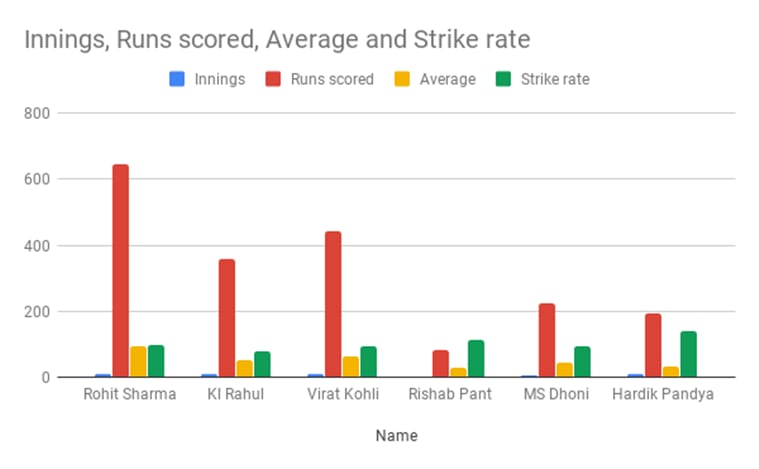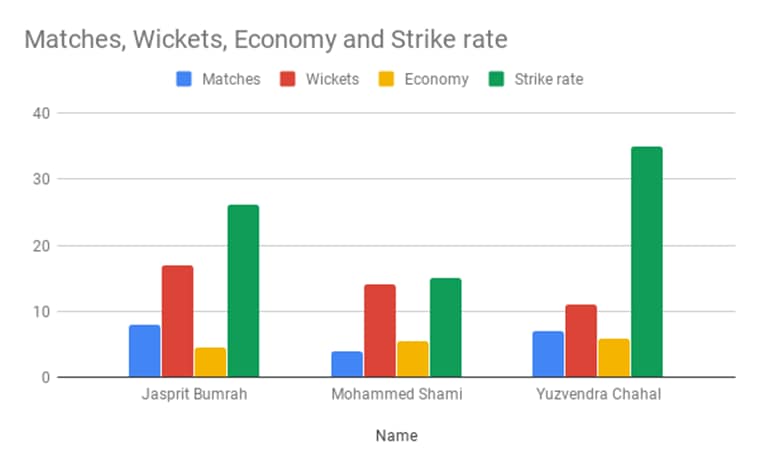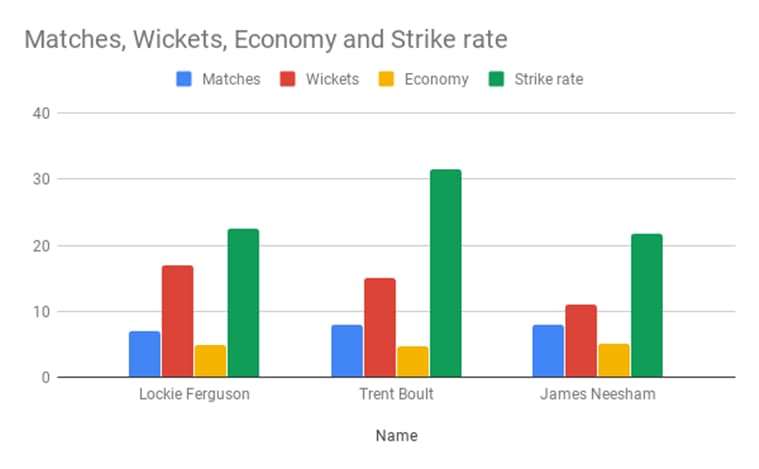
Written by Anmol Ahuja
India will face New Zealand in the first semi-final of World Cup 2019 on Tuesday with a chance to seal that Sunday date at Lord’s. Incidentally, these are the only two teams in the tournament who did not play each other in the group stage. While India finished on top of the points table with seven wins from nine games, New Zealand made it a nervy affair after consecutive losses in the last three group stage matches. So before the two sides lock horns let’s take a look as to how the two teams stack up against each other?
The Top 3-
The top three batsmen usually form the core of a team’s batting unit. In India’s case, the responsibilities have almost entirely rested on the trio of Rohit Sharma, KL Rahul, and Virat Kohli to the bulk of the scoring for their team. Sharma is currently the highest run-getter of the tournament so far with 647 runs (including five centuries) at an incredible average of 92.43. Kohli and Rahul are the second and third highest run-getters for India with 442 and 360 runs respectively. While the Indian captain averages 63.14 in the tournament, Rahul, who has been forced to open the innings since Dhawan’s injury has an average of 51.43.

For New Zealand, skipper Kane Williamson has been the only one among the runs at the top of the order. He has accumulated 481 runs in the tournament at an average of 96.20. However, he has seldom found support from the other end as the likes of Martin Guptill and Collin Munro have managed to score 166 and 125 runs respectively. As a result, NZ hasn’t had a 50-run partnership in the last eight games. Guptill has an average of 23.71 in the ongoing tournament while Munro averages just 25.
Middle Order Muddle-
Injuries to Shikhar Dhawan and Vijay Shankar has meant that India had to experiment once again with the No 4 slot. In eight matches so far, India has tried four options, with Rishabh Pant batting in the position for the last three games. Pant has scored 84 runs at an average of 28 through the World Cup.
MS Dhoni and Hardik Pandya have mostly been used at number 5 and 6 respectively. While Dhoni has scored 223 runs at an average of 44, Pandya has scored 198 runs at an average of 32. However, Pandya excels in terms of a better strike rate (140) as compared to Dhoni’s 93.31 in the tournament. Kedar Jadhav, who played at number 7 could only fetch 80 runs in 5 innings and was replaced by Dinesh Karthik who has just played one innings so far.

For the Kiwis, the experience of Ross Taylor comes at number four. The 37-year-old has scored 261 in seven innings at an average of 37. Wicketkeeper-batsman Tom Latham has remained at number 5 in the tournament but has scored just 98 runs in seven matches, at an average of just 16.33.
Following them are Jimmy Neesham and Collin de Grandhomme. Neesham performance has been average at best with 201 runs in six innings at a strike rate of 80.08, while Grandhomme has 158 runs after six innings at a strike rate of 104.64.
Bowlers Rule Roost-
India’s superlative bowling attack has ensured their team comes on top even while defending lower-than-expected totals. Spearheading the attack is Jasprit Bumrah who has bagged 17 wickets in 8 matches at a stunning economy of 4.68 and strike rate of 26.12. Not far behind is Mohammed Shami with 14 wickets from just four games. Shami’s 14 victims have come at a strike rate of 15.07 but at a slightly higher economy of 5.49. The form of spinners is a cause of concern for the Indian think tank as they have been unable to fulfil their duties in the middle overs. Yuzvendra Chahal is the only standout performer with 11 wickets in 7 games he has played so far.


For the Black Caps, seamer Lockie Ferguson has scalped 17 wickets from 7 games at an economy of 4.96 with a strike rate of 22.47. Coming in next is Trent Boult, who has picked up 15 wickets at an economy of just 4.68 and a strike rate of 31.60. The military medium pace of Jimmy Neesham has been a bonus with all-rounder picking up 11 wickets in seven matches he has played so far.
(The author is an intern at IndianExpress.com)




